One of the most common complaints doctors hear from patients is knee pain. What causes this pain cannot always be told immediately. The knees can be affected by various diseases such as knee arthrosis. It is also called gonarthrosis.
Gonarthrosis is a non-inflammatory joint injury that often leads to cartilage destruction, bone deformity, and limited mobility. This disease has the code M17 in the International Classification of Diseases (ICD-10).
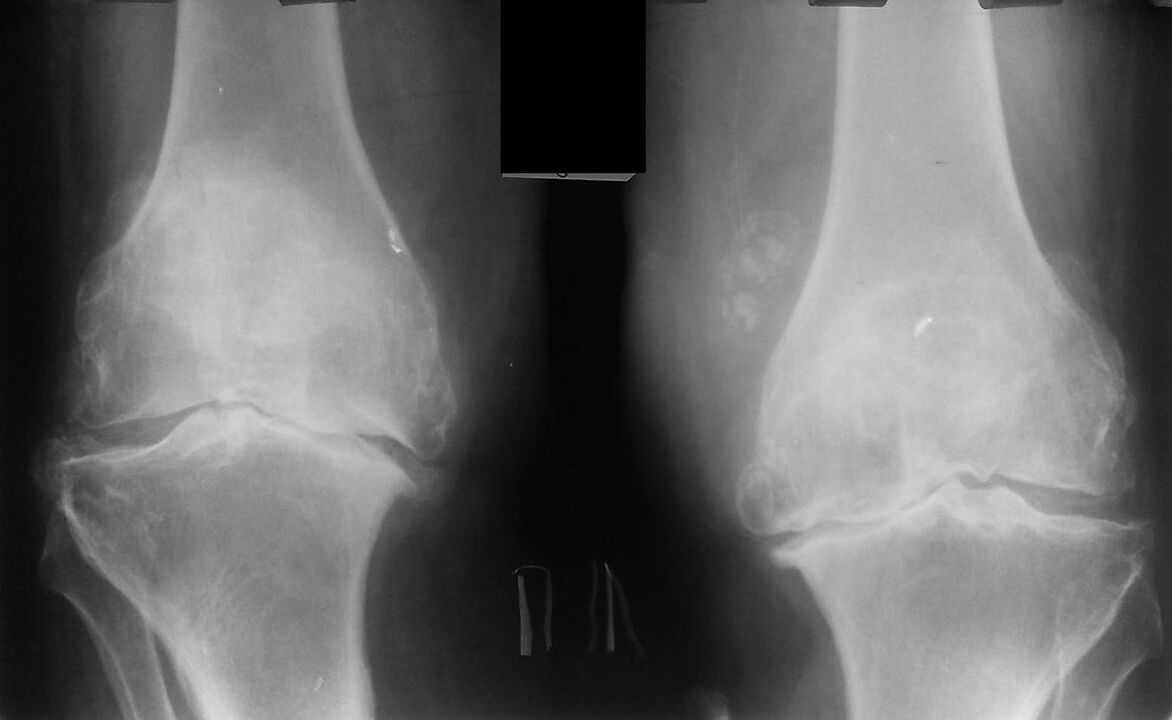
Each patient can be divided into two groups. The first group includes young people, more often young men, who have one, and less often both, knee injuries. They have a history of injury or knee surgery.
The second group includes those who are obese, middle-aged, or elderly, more often women who have developed gonarthrosis in more than one part of the body at the same time.
Symptoms of knee osteoarthritis
The symptoms of osteoarthritis of the knee gradually increase. Patients may not know they are sick for years until they notice obvious knee deformity or severe pain.
However, arthritis of the knee joint in the early stages of the disease is most often accompanied by discomfort and pain in the knee, and few seek medical attention.
Women who are prone to obesity, especially after the age of 40, are prone to this disease.
Varicose veins also contribute to the development of the disease. At this stage, it is possible to treat the disease at home without the use of tablets and ointments.
The pain does not appear suddenly, it gradually occurs over several years. They usually occur during sports, walking and other physical activities.
Acute pain may not be a symptom of gonarthrosis but may result from cracking, meniscus injury, or bruising. Severe pain is what motivates you to see a professional.
The pain often gets worse in the following cases:
- while walking;
- in a long standing position;
- under slopes;
- when lifting the body from a sitting position;
- during the transport of heavy objects.
During the performance of these operations, the maximum load acts on the joints, so if the patient feels severe discomfort, a second stage of knee inflammation can already be diagnosed. One tries to move less, to take up a static posture to avoid pain, but with constant physical activity, the discomfort returns.
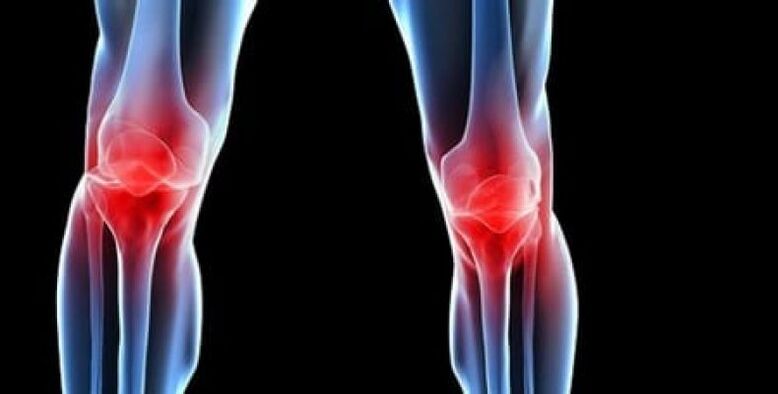
Deforming osteoarthritis of the knee joint is accompanied by a symptom like deformity. It becomes noticeable already in the second or third stage of the disease. First signs: the knee is slightly swollen but has retained its shape. In later stages the shape of the knee will change, one leg will be shorter or longer.
One of the most common symptoms is the cracking of the joints, which can be seen in the second and third stages. The most important thing is to distinguish the loud crunching of the joints of a healthy person from the deaf, dry crunching of the sick. This sound causes weakness of the tape device or high mobility of the joints.
It is recommended to wear a knee brace to ensure the immobility of the knee joint.
Forms of gonarthrosis
There are two forms of the disease:
- Primary: Occurs due to congenital abnormalities in the joints.
- Secondary: Occurs as a result of illness and injury.
The primary form of osteoarthritis of the knee often develops in childhood and is caused by the inadequate formation of ligaments and joints. They are exposed to high loads and deform during physical activity.
The secondary form of the disease is caused by the following factors:
- Injuries (bruises, sprains, dislocations, fractures) that result in damage to the structure of the bones, ligaments, and cartilage. All this is a post-traumatic form of the disease.
- Operations performed by dislocating the meniscus violate the integrity of the structure of the knee.
- Excessive load on the legs (typical for weightlifters).
- Obesity. Being overweight puts pressure on the cartilage of the knee joints.
- Passive lifestyle.
- Diabetes.
- Disease.
- Arthritis (an inflammatory process in the joints). Prolonged disease is accompanied by the formation of excess fluid in the joint cavity and causes complications.
- Metabolic disorders lead to the deposition of salts.
- knee transplantation.
- Diseases that cause prolonged muscle cramps in the legs or vasospasm.
The development of the disease can be unilateral or bilateral. Trauma often causes left or right gonarthrosis, and obesity is bilateral.
Stages of the disease
There are three stages to gonarthrosis:
- It can take months or even years from the start of the first stage to the visible manifestation of the disease. The person complains of intermittent foot pain, especially when he starts up or down the stairs and gets out of bed in the morning. The images usually show a narrowing of the connection between the joints, and instead of going to the doctor, patients usually use traditional medicine - ointments and tinctures.
- The second stage is characterized by more acute pain that does not stop with immobility of the limb. A crack is displayed. Fluid accumulates in the joint cavity, and the X-ray shows deformation and growth of the bone. At this stage, the patient tries in every possible way not to move the affected limb. Your doctor will prescribe injections and chondroprotectors - medicines that help cartilage to recover.
- In the last third stage, the pain becomes permanent and often worsens as the weather conditions change. X-ray shows significant deformity of the knee, which can only be corrected by surgery, the patient must take a complex of chondroprotectors. The patient's gait changes: he walks on half-bent legs or rolls from side to side.
Causes of the disease. Vulnerable groups
Overweight
Most often, deforming osteoarthritis affects the elderly. A special risk group includes women who are overweight after 40 years. Obese people are 4 times more likely to have the pathology than people of normal weight. The pattern is simple: the heavier a person is, the faster the disease develops and the more severe it is. In this case, the form of the disease can be called acquired. The joints of the lower limbs fall under the impact because they are forced to bear the greatest load.
Overweight people also face hormonal imbalances and metabolic disorders that contribute to the development of obesity and arthrosis.
Disease
Those over 60-65 years of age can be called older. In this population, osteoarthritis occurs in 65 to 85 percent of people.
This is due to age-related changes that negatively affect the structure of the joints. Ordinary walking can also become a significant strain and stimulate the development of the disease, while worn cartilage can no longer recover on its own.
Congenital pathologies and hereditary factors
The disease can affect young people as well as those who do not suffer from obesity. Usually, in such situations, the disease is due to congenital defects of the knee joints, such as a lack of intra-articular lubrication. Inheritance also plays an important role.
Yet the majority of patients with knee pain are people of considerable age. Arthrosis is rare in young people. Unfortunately, young patients do not always receive the treatment they need because not all doctors consider it necessary to pay close attention.
Heavy loads
People earning a living from hard physical work and athletes of all levels are also at risk for knee inflammation. In this case, the disease becomes an occupational pathology.
Surgery, injuries and other diseases
Surgery, trauma, various diseases of the joints can provoke the appearance of gonarthrosis.
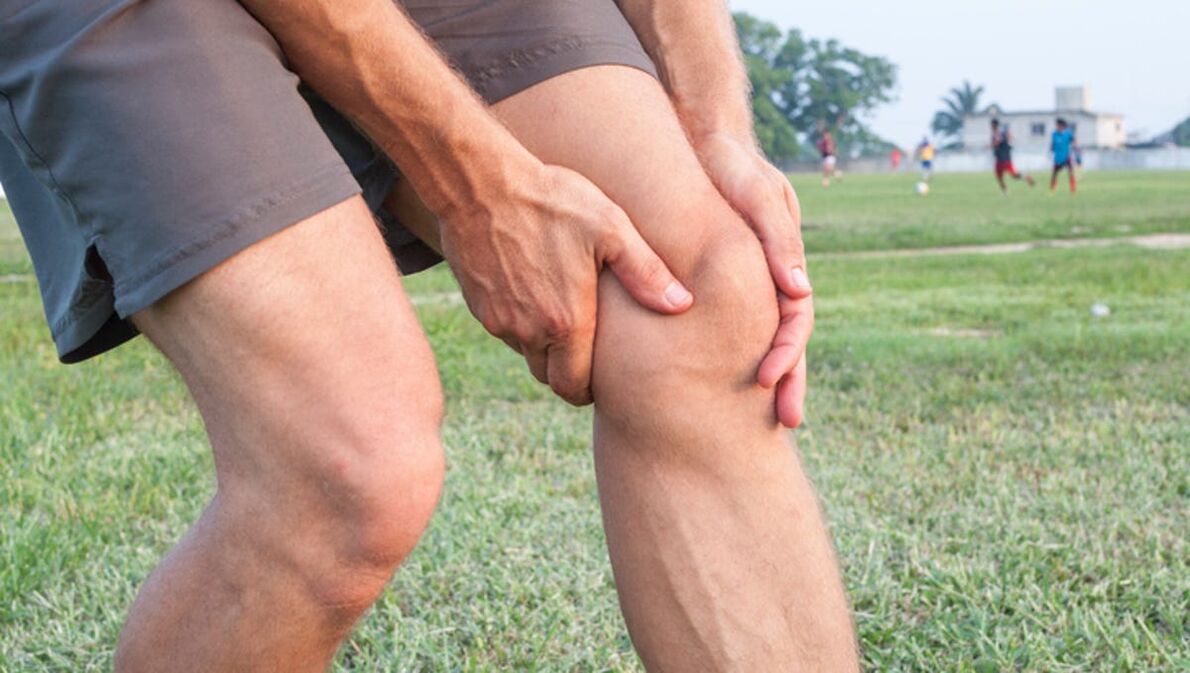
If the cause remains unknown, osteoarthritis of the knee is commonly referred to as idiopathic.
Diagnosis of knee arthrosis
This diagnosis is made based on the patient's complaints, examination data, palpation and x-ray examination of the patient's joint.
An X-ray is a standard research method that allows the diagnosis to be confirmed, the extent of abnormalities to be determined, the dynamics of the process to be monitored, and other pathological processes (such as tumors) in the tibia and femur to be ruled out. .
It should be noted that primary changes in the structure of the knee joint may be absent on radiographs. The narrowing of the joint gap and the compaction of the subchondral zone are then determined. The joint ends of the femur, and especially the tibia, dilate, and the edges of the condils become pointed.
Additional diagnostic methods are CT (computed tomography) and MRI (magnetic resonance imaging), which allow a more detailed study of pathological changes in bone structures and the identification of changes in soft tissue.
How to treat knee gonarthrosis
The more acute the stage of the disease, the more complicated it is to treat gonarthrosis. The chronic nature of the pathology may remain in the remission phase when the active manifestations of the disease are minimal or absent.
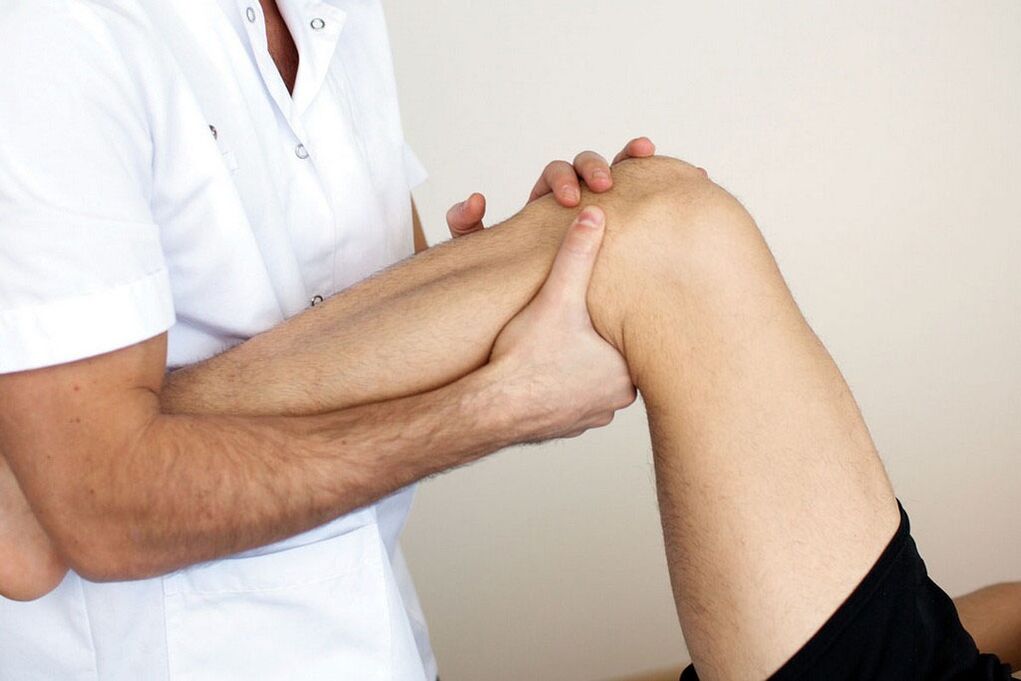
Physiotherapy in combination with chondroprotective drugs gives positive results.
The treatment options are:
- drug therapy (chondroprotectors);
- surgical intervention;
- rehabilitation course (gym therapy, massage, etc. ).
Drug treatment
Non-steroidal analgesics are prescribed during drug therapy. These medicines help relieve the pain and symptoms of synovitis (inflammation). If the pain is particularly severe or the synovium of the knee joint is severely inflamed, corticosteroids may be used. These drugs have a stronger analgesic and anti-inflammatory effect than non-hormonal analgesics. Muscle relaxants and antispasmodics help the periarticular muscles get rid of cramps.
Antioxidants and vasodilators improve cartilage nutrition. The main drugs for conservative treatment of the disease are chondroprotectors containing chondroitin and glucosamine sulfate (the natural constituents of cartilage).
The use of pathogenetic drugs should be systemic and long-lasting.
Physiotherapy
Physiotherapy treatments (UHF, ultrasound, or light therapy) are additional means of accelerating the healing process.
These include:
- Acupuncture. This method relieves muscle cramps near the affected joint, normalizes metabolic processes in them, thereby restoring damaged cartilage tissue.
- Hirudotherapy. Treatment with leeches has the same effect as injections as it improves blood circulation.
- laser therapy. Such procedures relieve inflammation, swelling, improve metabolism and neutralize pain.
- Cryotherapy. Both home treatment with liquid nitrogen and conventional ice are effective.
- Magnetotherapy. The effect of the magnetic field not only improves blood circulation in the tissues but also relieves swelling and inflammation.
- Electrostimulation. With the help of micro-discharges of different frequencies, the muscles recover and strengthen, and the blood circulation in the limbs improves.
Physiotherapy for knee gonarthrosis is effective because it reduces pain. Depending on the stage of the disease, your doctor will usually prescribe such treatment.
Physiotherapy
Practical therapy for osteoarthritis of the knee is one of the main ways to restore atrophied muscles and should be performed very carefully and slowly. If the patient feels that the pain is returning, the exercise should be stopped.
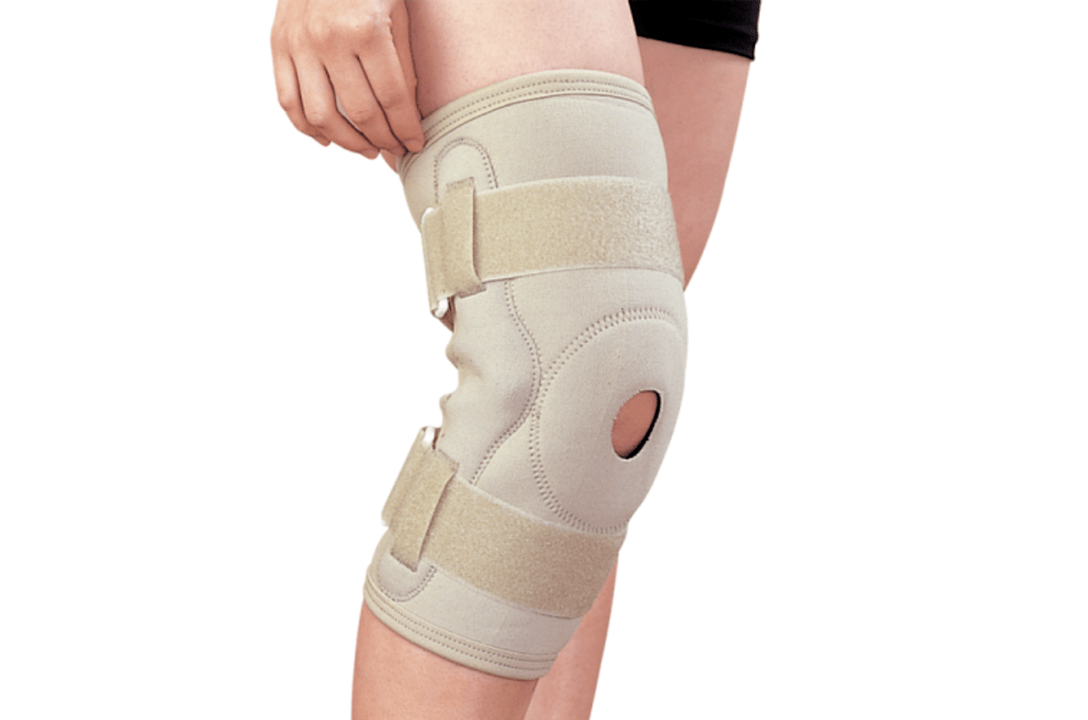
Special knee pads should be worn during therapeutic exercises. The rehabilitation course also includes the use of these orthopedic devices to reduce the load from the affected knee to the stick or prosthesis. Patients with gonarthrosis often need to wear a knee brace to relieve pain while walking.
Gonarthrosis therapeutic exercise reduces the load on the injured joint and develops the muscles of the legs. Exercises that burden the joint are strictly contraindicated. Water gymnastics and swimming are ideal activities.
Orthopedic therapy
To reduce the load on the affected joints, the patient should use a stick. A good helper for knee inflammation is the orthopedic shoe, which provides a natural foot position and even load distribution.
Massage
Massage relieves muscle cramps, reduces pain and increases range of motion. This procedure improves blood circulation and supplies nutrients to the joint.
Surgical intervention
A marked decrease in working capacity (especially up to the age of 45) requires surgical treatment. The choice between correction (removal of osteophytes) and radical (knee replacement) treatment methods depends on the stage of the disease, the age of the patient, the symptoms and other factors.
Nutrition
As for the special diet for gonarthrosis, it is most often aimed at reducing the patient’s weight, as being overweight leads to joint overload. It is recommended to eat a small meal every 3 hours, eat lean meat (chicken, turkey, rabbit) and exclude fatty pork, intake of the necessary proteins from legumes.
Refined oil should be changed to unrefined and salt intake should be limited. The therapeutic diet also includes the rejection of canned, fried and smoked foods. In order to recover dead cartilage, the body needs to be supplied with carbohydrates found in cereals and whole wheat flour.
In addition, it is recommended to drink freshly squeezed juices such as carrots, beets and apples to remove toxins and reduce inflammation in the body.
Fish and various gels act as chondroprotectors and help to restore cartilage not only in the initial stage but also during the period of exacerbation.
Folk treatment methods
There are many ointments, compresses, tinctures that are used by lovers of traditional medicine. These medicines are usually made from herbs, medical bile, and improve the circulation of the joints.
The compresses and ointments also relax the muscles, their effectiveness is very high, but in the third stage of gonarthrosis they are practically useless without the use of drugs.
Nor should traditional medicine be neglected, as they help alleviate the discomfort and reduce many of the symptoms of the disease. But in all cases, consult a doctor and do not self-heal.
There are contraindications, consult a specialist.
Prevention
The following principles of a healthy lifestyle are recommended:
- balanced diet;
- giving up bad habits (smoking, alcohol);
- sports;
- maintaining a healthy weight;
- prevention of sports injuries (bruises, displacements, fractures).
Knee osteoarthritis offers a number of treatment options depending on the age and physical condition of the patient. Sports and timely treatment are needed to prevent and control the disease at an early stage.



















